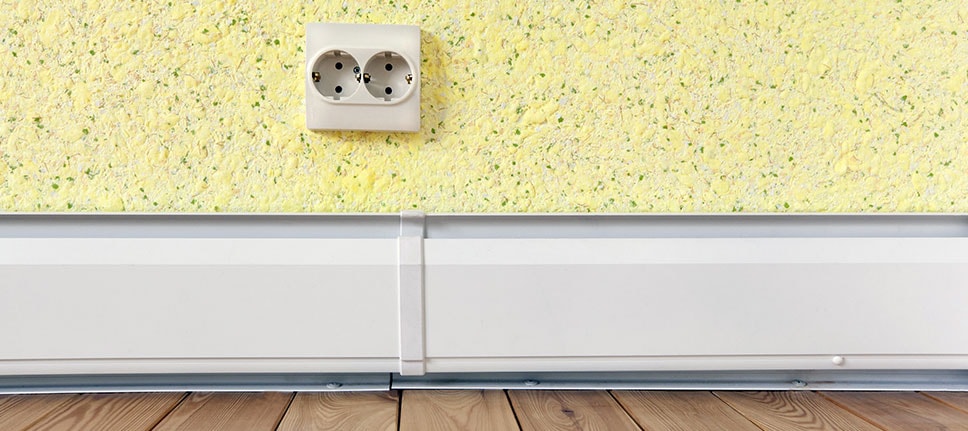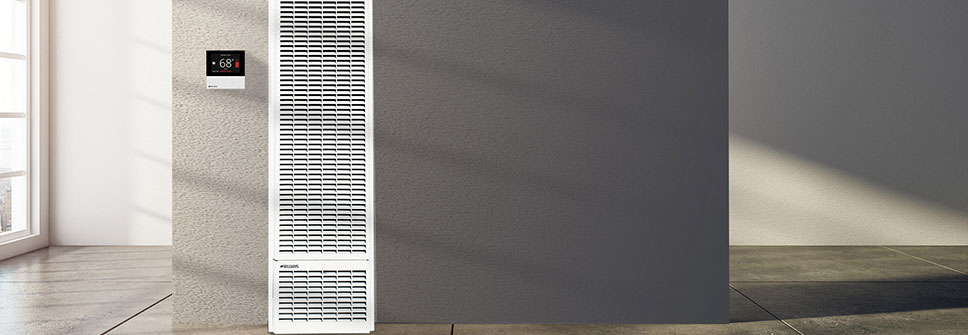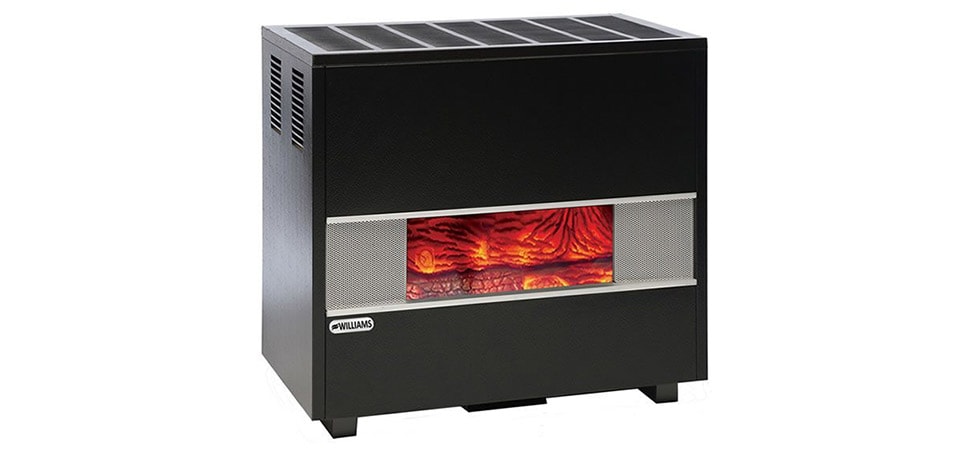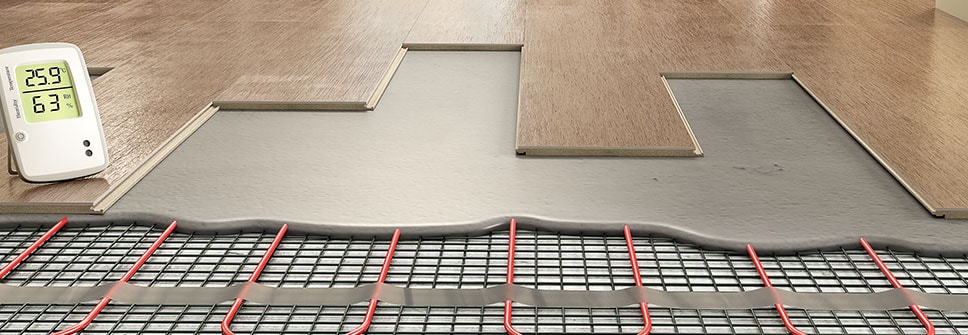
Many of us spend significant amounts of time in our basements, whether we're working from home, watching a movie, or exercising. Oftentimes, you may find yourself shivering down there, even if the rest of the house is warm and toasty.
Usually, that basement chill is caused by dampness from underground moisture. The dirt surrounding your basement insulates it from natural surface warmth. Also, many basements lack thermostats, so central HVAC systems can't heat them sufficiently.
Fortunately, there are many simple ways to heat a basement that don't involve messing with your main heating system, and we cover them all below.
If you want to heat a basement room on the sly, put in electric baseboard heating panels. They are low-profile heating units installed on the lower part of the wall. Inside, electricity heats up metallic fins that in turn heat up air as it passes across them. The warm air rises out of the heater and replaces cold air in the room.

You'll need an electrician to hardwire the panels to your main breaker for them to work. Once you do, they'll provide adequate heat for your basement, although there may still be some cold spots.
If electricity costs are high in your area, you may want to consider an alternative heating option for your basement, as electric baseboard can run up your bill. However, if power is cheap, this is the way to go.
Save space and stay warm with a wall-mounted furnace. No ductwork is required-your professional installer will connect it directly to a gas or propane line and vent.

Inside the wall furnace is a burner and fan that distributes heat around your basement. Some wall furnace models offer modulating technology that responds to the smallest temperature changes to maintain the pre-set temperature. The result is comfort unmatched by many traditional HVAC systems.
Wall furnaces are great for heating your basement because they'll leave fewer cold spots than baseboard and are relatively easy to install out-of-sight.
Floor-mounted room heaters will heat up your basement in style. Like their wall-mounted cousins, they come in natural gas and propane options and require no ductwork. They operate quietly and efficiently for maximum comfort.

The key appeal to floor-mounted heaters is their fireplace look. Williams makes models with a viewing port where you can see the flames on the burner. It's like having a fireplace in your basement! Standard models are also available if you want the heater to blend into the room.
Known mostly for cooling, ductless mini-splits can also be effective basement heaters. Just make sure you buy heat pump mini-splits instead of cooling-only models so you can use them year-round.

Mini-splits extract outdoor heat and pump it into your home. As a result, they are extremely efficient, especially in milder climates. No gas is needed, just some electricity. Although modern mini-splits can work in colder northern climates, they become less efficient because it's harder to pull warmth from the frigid air.
You don't need ductwork either, but you will need to have an installer run a refrigerant line from an indoor fan to an outdoor compressor. If you make mini-splits your home's main heating source, you'll need a multi-unit system, which will let you have different temperatures in different parts of the house.
Planning a basement remodel? You might consider installing electric radiant floor mats. Installed under your floor, these mats use electric heating elements to warm up your cold feet.

Once installed, underfloor radiant mats are designed never to be touched again (nor would you ever want to have to rip up the floor). For this same reason, they're not the most economical choice if you're not planning a basement remodel anyway.
Electric radiant panels will effectively heat up virtually any type of flooring (stone and tile work the best). Although they won't heat up the space as thoroughly as a wall furnace or mini-split, electric radiant mats will heat your basement enough to keep you comfortable.
Keeping your basement warm isn't just about comfort. If it gets too cold, pipes can freeze and cause damage to your plumbing system. Prevent this by installing one of the above basement heating options if your main heating system isn't enough. While you're at it, add in a smart thermostat such as ecobee or Nest for the ultimate comfort and control.
Need help deciding which solution is best for your home? That's what we're here for! Contact us to speak with a knowledgeable representative.
NEXT: Shop Ceiling & Wall Heaters